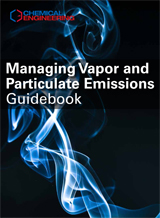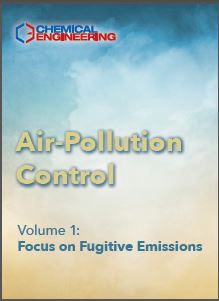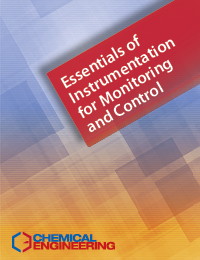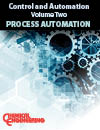Description
This guidebook contains practical, how-to engineering articles that were originally published in Chemical Engineering. Included are useful engineering tip sheets from Chemical Engineering’s “Facts at Your Fingertips.”
The collection of tutorial-style engineering articles in this volume cover a wide array of topics related to monitoring and managing vapor and particulate emissions during chemical process operations. You will be provided with tips for reducing or eliminating fugitive emissions from tanks, pipes and process equipment. The guidebook also focuses on the proper operation and management of burners, combustion units and flares to minimize their environmental impact.
Several articles share best practices for reducing the risk of dust explosions — a risk that is ever-present in bulk-solids-processing operations handling fine powders, as well as providing related safety tips to reduce hazards associated with vapor emissions.
As an extra feature, this guidebook also includes several articles related to managing modernizing plant revamps and capital-intensive projects.
This guidebook is available in PDF format, 127 pages.
Articles contain:
Advanced Control Methods for Combustion
Advanced control techniques can raise efficiency and lower pollutant emissions in industrialcombustion. The capabilities and adoption of several methods are discussed
Facts at Your Fingertips: Dust Hazards
Fact at Your Fingertips: Gas Hazard Definitions and Data
Facts at Your Fingertips: Activated Carbon
Fact at Your Fingertips: Wet Scrubbers
Engineering for Plant Safety
Early process-hazards analyses can lead to potential cost savings in project and plant operations
Common Mistakes When Conducting a HAZOP and How to Avoid Them
An important part of ensuring the success of a HAZOP study is to understand the errors that can cause the team to lose focus
Chemical Process Plants: Plan for Revamps
Follow this guidance to make the most of engineering upgrades that are designed to improve plant operations or boost throughput capacity
Flare Consolidation Considerations
Consolidating multiple flares can help mitigate emissions and maintenance
Controlling SO2 Without Corroding the Bottom Line
Mist eliminators in wet scrubbers comprise a large portion of system operating costs. Consider these material selection and replacement criteria to curb chronic maintenance requirements
Dust Control in the Chemical Processing Industries
The prevention of dust hazards in the CPI is integral to process-safety management — widereaching mitigation schemes must be implemented
Project Optimization Through Engineering
Follow these practical recommendations to reduce capital outlay and operating costs, deliver shorter schedules and improve design quality
Things You Need to Know Before Using an Explosion-Protection Technique
Understanding the different classification methods is necessary to better select the explosionprotection techniques that will be used
Measuring Exposures to Aerosols and Dust
Accurate measurements of exposures to aerosols and dusts by plant personnel can be tricky. Here is some help for determining exposures and addressing uncertainties
Global Air-Pollution Regulations: Variation is the Norm
Operators with facilities in many countries need to focus on the requirements of each
Post-Combustion Carbon Capture Technologies
Several CCS processes hold much promise, and there are challenges yet to be met
Prevent Combustible Dust Explosions with N2 Inerting
Targeted use of blanketing with inert gas offers an effective strategy for preventing combustible dust explosions in CPI facilities
Piping-System Leak Detection and Monitoring for the CPI
Eliminating the potential for leaks is an integral part of the design process that takes place at the very onset of facility design
Flare-Gas Recovery Methods for Olefin Plants
Adding flare-gas recovery units at strategic locations of an olefin plant can not only reduces emissions, but will save money as well
Dust Explosions: Prevention & Protection
Understand what causes these disasters and then put these practical measures in place
Burner Inspection and Maintenance
Burners and their components can be quite complex. Establishing maintenance and inspection best practices encourages long term operational reliability
An Overview of Filtration
Understanding how different filtration methods work leads to a more informed decision when selecting a filtration system
Optimizing Flare Operation Through Proper Design
Flare problems are often caused by the seal systems that are designed to control air ingress. Follow these troubleshooting guidelines to improve design and ensure safe, reliable flare operation
Facts at Your Fingertips: Industrial Adsorbents
Emissions Regulations and Control
Harnessing new technologies for best practices in pollution control could lead to a more ideal framework of policies and programs




